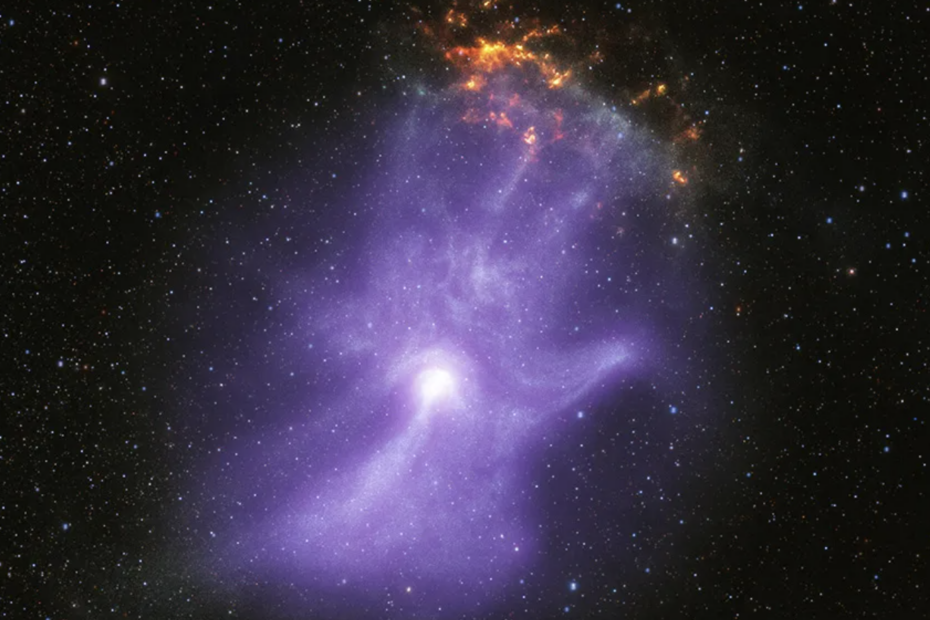NASA has shared a fascinating new image that depicted what seemed like a spectral hand reaching out in the cosmos. This ghostly sight isn’t an otherworldly entity, but the remnants of a once colossal star that exhausted its nuclear fuel approximately 1,500 years ago. Located around 16,000 light-years away from Earth, the star collapsed into a dense neutron star.
Neutron stars are distinctive for their rotation and powerful magnetic fields, known as pulsars. These peculiar celestial bodies generate extreme conditions unmatched elsewhere in the universe. By directing two of NASA’s X-ray space telescopes towards this neutron star and its enveloping magnetic fields, NASA and accompanying astronomers are gaining critical insights into pulsar behavior, particularly how they discharge particles into space and influence their immediate surroundings.
The spectral hand-like structure was formed by one such pulsar. X-ray data revealed that this youthful pulsar generated a jet of matter and antimatter, which originated from the magnetic field’s poles, subsequently forming a “pulsar wind nebula.”
The nebula associated with this neutron star, recognized as MSH 15-52, bears a striking resemblance to a human hand. The pulsar is situated at the “palm” of this cosmic hand, with the nebula trailing off as ghostly “fingers.”
NASA’s Imaging X-Ray Polarimetry Explorer telescope kept a steady gaze on the nebula for nearly 17 days, marking the longest period the device has studied an individual object since its inaugural launch in December 2021. Consequently, the surveillance generated a map of the magnetic field.
“The data from the IXPE telescope has given us the first-ever map of the magnetic field in the ‘hand’,” stated study leader Roger Romani from Stanford University, California. “The charged particles creating the X-rays follow the path of the magnetic field, shaping the basic structure of the nebula, akin to how bones form the shape of a human hand.”
Researchers discovered an unusually high degree of polarization within the nebula. They hypothesize that this could mean the magnetic field is “very straight and uniform” with minimal turbulence. This observation also suggests that particles in turbulent regions of the nebula receive an “energy boost,” propelling them towards the “wrist, fingers, and thumb” of the nebula.
“We’ve shed light on the life cycle of highly energetic particles of matter and antimatter around the pulsar,” said study co-author Niccolò Di Lalla, also from Stanford. “This enhances our understanding of how pulsars can function as particle accelerators.”
NASA unveiled this captivating image of the “ghostly cosmic hand” just days after the agency’s Juno mission spotted a spooky “face” on Jupiter.

Gladstone is a tech virtuoso, boasting a dynamic 25-year journey through the digital landscape. A maestro of code, he has engineered cutting-edge software, orchestrated high-performing teams, and masterminded robust system architectures. His experience covers large-scale systems, as well as the intricacies of embedded systems and microcontrollers. A proud alumnus of a prestigious British institution, he wields a computer-science-related honours degree.
